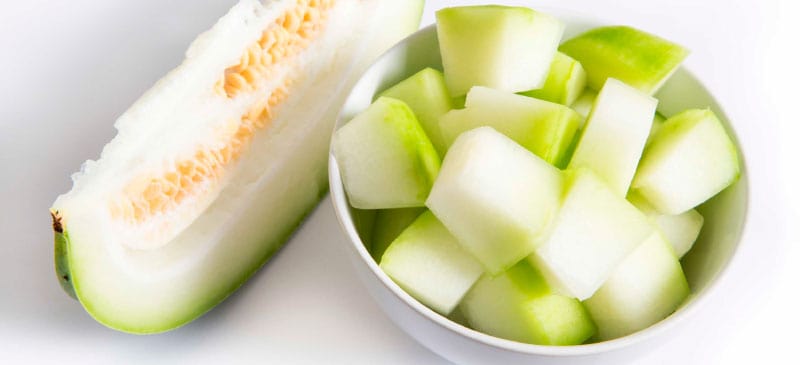This Dr. Axe content is medically reviewed or fact checked to ensure factually accurate information.
With strict editorial sourcing guidelines, we only link to academic research institutions, reputable media sites and, when research is available, medically peer-reviewed studies. Note that the numbers in parentheses (1, 2, etc.) are clickable links to these studies.
The information in our articles is NOT intended to replace a one-on-one relationship with a qualified health care professional and is not intended as medical advice.
This article is based on scientific evidence, written by experts and fact checked by our trained editorial staff. Note that the numbers in parentheses (1, 2, etc.) are clickable links to medically peer-reviewed studies.
Our team includes licensed nutritionists and dietitians, certified health education specialists, as well as certified strength and conditioning specialists, personal trainers and corrective exercise specialists. Our team aims to be not only thorough with its research, but also objective and unbiased.
The information in our articles is NOT intended to replace a one-on-one relationship with a qualified health care professional and is not intended as medical advice.
Winter Melon for Digestion, Weight Loss & More
January 9, 2023

What looks like a watermelon, tastes like a cucumber and has an oblong shape? It’s winter melon, or ash gourd, and it’s been used in traditional Chinese medicine and Ayurvedic medicine for thousands of years.
Winter melon is an excellent source of antioxidants, dietary fiber and vitamin C. It’s hydrating and low in calories, making it a great addition to filling, satisfying recipes.
What Is Winter Melon?
Winter melon, or ash gourd, is a fruit that’s commonly used in Chinese and Indian cuisine. With the scientific name Benincasa hispida, it’s a member of the Cucurbitaceae or gourd family, along with cucumbers, melons and zucchini. It also goes by the names wax gourd, white gourd and winter gourd.
Why is it commonly called winter melon? It may be because the fruit can be stored for many months, so when it’s harvested during late summer and autumn months, it can be eaten three to four months later in the wintertime.
Ash gourd resembles a large watermelon, but it’s a dark green color and has an oblong shape. The flesh of the fruit is white, as are the seeds, and unlike most fruits, it cannot be consumed raw.
The flesh is typically simmered or steamed, and it’s treated more like a vegetable in Asian and Indian recipes.
Winter melon has a mild taste that’s likened to cucumber and watermelon rind (the white part). It pairs well with sweeter fruits, like watermelon, and in vegetable dishes that include squash and other members of the gourd family.
Nutrition
Winter melon is made up of mostly water, like watermelon, and it’s low in calories. It provides a good amount of fiber and nutrients like vitamin C and riboflavin.
Ash gourd also features health-promoting antioxidants, including flavonoids and carotenes. These compound contribute to the fruit’s potential health benefits.
100 grams of ash gourd contains approximately the following:
- 13 calories
- 3 grams carbohydrates
- 0.4 grams protein
- 0.2 grams fat
- 3 grams fiber
- 13 milligrams vitamin C (14 percent DV)
- 0.6 milligrams zinc (6 percent DV)
- 0.4 milligrams iron (5 percent DV)
- 0.04 milligrams thiamin (3 percent DV)
- 0.4 milligrams niacin (2 percent DV)
- 0.13 milligrams pantothenic acid (2 percent DV)
- 10 milligrams magnesium (2 percent DV)
- 0.05 milligrams manganese (2 percent DV)
- 19 milligrams phosphorus (2 percent DV)
- 19 milligrams calcium (2 percent DV)
- 5 micrograms folate (1 percent DV)
Benefits
1. Provides Antioxidants
Research indicates that ash gourd is rich in polyphenols, flavonoids and anthocyanins. For this reason, it’s known as a functional food that has the potential to reduce inflammation and fight cell damage caused by free radicals.
You’ll find these powerful compounds in winter vegetables like cabbage and carrots and fruits like blueberries and plums.
Antioxidants play a protective role in our bodies by fighting free radical compounds that can cause serious harm. Eating fruits and vegetables rich in antioxidants helps prevent or delay cellular damage that can lead to disease.
One study published in the Indian Journal of Pharmacology found that extracts from winter melon have antioxidant, anti-inflammatory and anti-ulcer effects.
2. Low in Calories
Wax gourd is low in calories and contains a good amount of fiber. It features a range of micronutrients, including vitamin C, B vitamins and zinc, while increasing satiety.
Research suggests that fruits high in fiber can reduce calorie consumption and body weight over time. Adding nutrient-dense, low-calorie foods to your diet is an excellent way to maintain a healthy weight and optimize overall health.
3. Aids Digestion
Did you know that most Americans don’t consume adequate amounts of whole fruits and dietary fiber? Winter melon provides soluble fiber, which slows down digestion and can help digestive issues like constipation.
Research highlights how consuming dietary fiber from fruits can have protective effects against colonic gastrointestinal health, including issues like constipation, IBS and diverticular disease.
Wax gourd also increases satiety, making you feel full longer. The fruit is made up of mostly water, so it’s hydrating and can support healthy digestion and regularity as well.
It’s also considered a natural laxative and diuretic because of its water and fiber content.
4. Considered a “Yin” Food
Like most green vegetables, winter melon is considered a yin food in traditional Chinese medicine, which means that it has refreshing properties. It’s known as an alkaline fruit that has a cooling, neutralizing effect within the body.
It helps refresh the body, and it’s valued for its ability to soothe stomach discomfort and digestive complaints.
How to Eat
Winter melon should not be consumed raw. First, the skin and seeds must be removed. Then the flesh of the fruit can be sliced or cubed and lightly cooked.
The fruit can be simmered, steamed, grilled, roasted and parboiled for about five minutes. The flesh will become softer when cooked, but be sure not to cook it too long or it will become mushy.
Cooked winter melon is added to:
- soups
- stir-fries
- casseroles
- stews
- curries
- cakes, pies and other sweet dishes
- candies
- beverages like juices and smoothies
Winter melon seeds can be roasted and eaten just like pumpkin seeds.
One of the most popular recipes containing this fruit is winter melon soup. The recipe varies a bit, but it usually includes cubed ash gourd, chicken broth, chicken, cured ham and mushrooms. Scallops, scallions and ginger are commonly added as well.
Another popular way to consume the fruit is winter melon tea, which is made by cooking the flesh of the melon with brown sugar. This is a two-hour process that involves cooking down the fruit with sugar to create a syrup consistency. After running the syrup through a strainer, it’s added to hot or cold water to make a sweet tea.
Risks and Side Effects
Consuming wax gourd is safe in normal amounts. It can be added to recipes and beverages just like watermelon and cucumber.
It’s not common to experience allergic reactions from winter melon, but if you experience stomach discomfort and any other adverse side effect, stop consuming the fruit immediately.
Conclusion
- Winter melon is a large, mildly sweet fruit that’s commonly used in Asian and Indian recipes.
- It’s lightly cooked and added to soups, stir-fries, casseroles, sweet dishes and beverages to provide fiber and a range of micronutrients.
- Ash gourd is filling and hydrating. It’s known as a yin food that refreshes the body and has a cooling effect on the digestive system.












